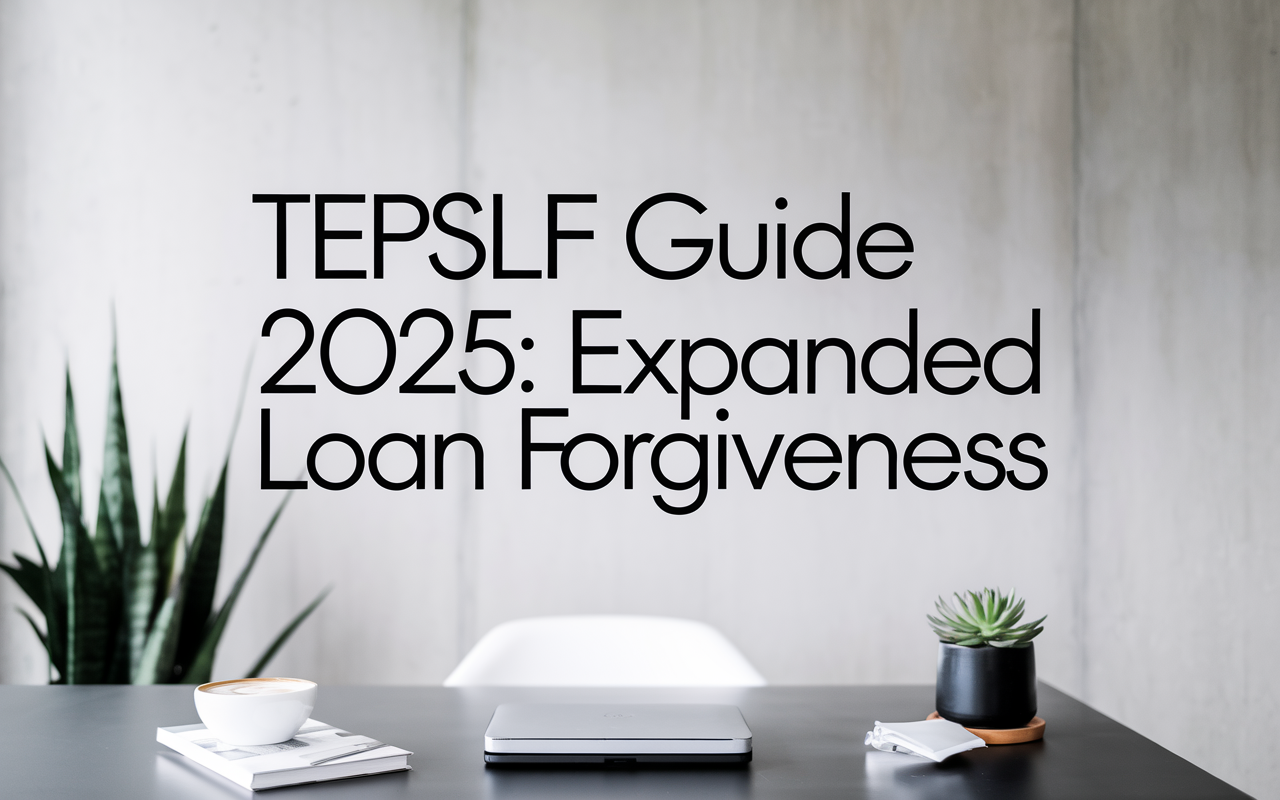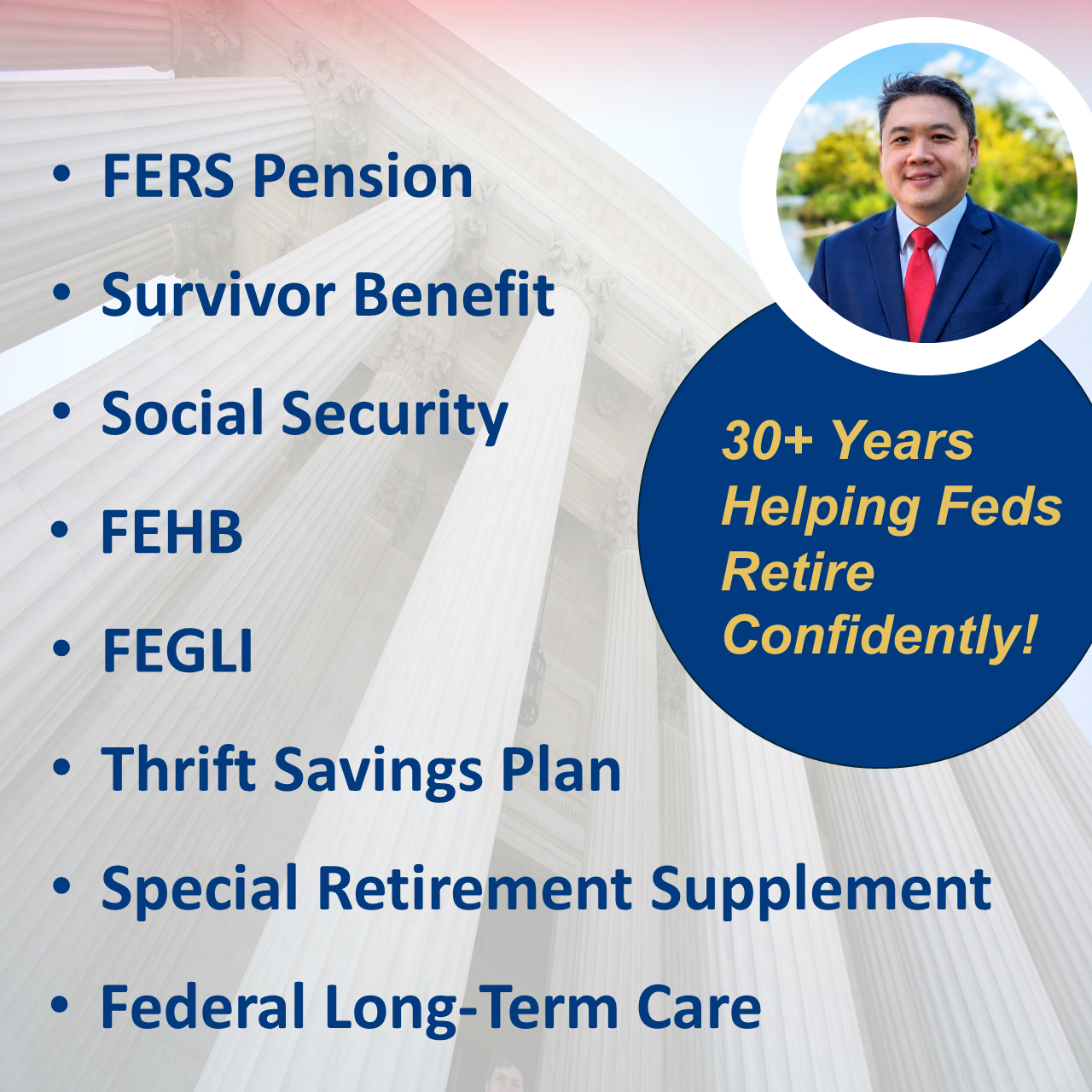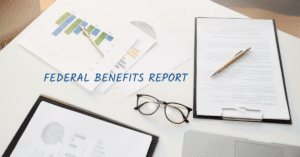TEPSLF Guide 2025: Qualifying for Expanded Loan Forgiveness
Life for many borrowers hoping to eliminate their student debt through public service has certainly been full of twists and turns. From the introduction of Public Service Loan Forgiveness (PSLF) in 2007 to the subsequent emergence of Temporary Expanded Public Service Loan Forgiveness (TEPSLF) a decade later, it’s been a rollercoaster ride. Many federal employees and other public servants discovered after making years of payments that they enrolled in non-qualifying repayment plans, leaving them ineligible for loan forgiveness they believed was well within reach. TEPSLF provides a remedy. This guide takes a comprehensive look at where TEPSLF stands in 2025, who qualifies, how to apply, and why understanding its ins and outs could benefit your broader financial strategy—particularly if you are a federal employee juggling retirement savings through the Thrift Savings Plan (TSP).
1. Introduction to TEPSLF
Back in 2007, PSLF emerged as a beacon of hope for government and nonprofit employees seeking relief from staggering student loan burdens. The program’s promise was compelling: make 120 qualifying monthly payments while working full-time for a qualifying employer, and whatever remains of your Direct Loans would be forgiven. As more borrowers pursued this path, an unintended but critical reality surfaced. A number of well-intentioned borrowers inadvertently found themselves in repayment plans that, at the time, did not qualify for PSLF. Years of diligent payments counted for very little, if at all.
In response to this inequity, Congress enacted TEPSLF to provide an expanded opportunity for borrowers to receive forgiveness, even if they had previously been on certain non-qualifying repayment plans. TEPSLF has become synonymous with a “second chance” at debt relief—especially for those who gave significant years to public service only to learn they needed a course correction. By 2025, TEPSLF continues to act as a crucial safety net for many public sector borrowers.
According to data on loan forgiveness approvals over recent years, TEPSLF has led to the approval of around 2.84% of the applications processed, resulting in a total forgiveness of $287 million, with an average discharge amount of $44,017. The Department of Education regularly revises procedures to streamline how borrowers apply, and each year sees additional improvements in the application process. While there have not been dramatic overhauls to TEPSLF regulations for 2025 specifically, the program remains robust and essential.
For federal employees watching both their paychecks and their TSP contributions, debt relief can pave the way to freer cash flow. It could also help tilt the scales in favor of retirement investing and financial freedom sooner rather than later. If you’ve been wondering whether TEPSLF might help you breathe easier on your student loan journey, keep reading.
2. Understanding TEPSLF Requirements and Eligibility
The necessary ingredients for TEPSLF eligibility can be grouped into three categories: employment, loan type, and repayment history. Borrowers must have spent at least ten years in public service with a qualifying employer, hold a Direct Loan (or have consolidated their federal loans into a Direct Consolidation Loan), and ensure the payments made on these loans meet or exceed what they would have paid on an income-driven repayment (IDR) plan during certain required periods. Essentially, TEPSLF is intended for the borrower who was almost meeting PSLF criteria—except for being in the wrong repayment plan.
To illustrate, consider the case of a teacher who faithfully worked in a public school for a decade and made 120 payments on a loan. She initially believed she was on an approved payment plan, but discovered her plan was not officially recognized under PSLF rules at the time. Normally, this revelation would mean starting from square one. TEPSLF, however, catches her and ensures that if her payments were of a sufficient amount, she might still receive forgiveness after meeting the same 10-year (120-payment) benchmark.
Another critical point is that TEPSLF applies only to Direct Loans administered under the William D. Ford Federal Direct Loan Program. Borrowers with older FFEL or Perkins Loans can consolidate them into a single Direct Consolidation Loan, though any payments made before consolidation might not count toward that required 120 unless they were made after a certain date or managed through one of the recent waivers. Given the complexity, many students find that thorough record-keeping helps them demonstrate their payment histories and employer qualifications.
For those considering TEPSLF, confirming employer eligibility is also paramount. Government agencies at the federal, state, or local level qualify, as do many nonprofits and 501(c)(3) organizations. Borrowers often underestimate the importance of these details, which is why it helps to submit an employer certification form each year. Doing so can ensure a smooth track record of verifying your full-time service.
3. Navigating the Application Process
Although TEPSLF and PSLF are distinct programs, there is a close link between them. In practical terms, your quest for TEPSLF usually starts with a PSLF application. If you are found ineligible for PSLF specifically because your repayment plan did not qualify, you may then request consideration for TEPSLF. The Department of Education and its servicers assess whether you meet TEPSLF’s requirements, particularly those relating to sufficient payment amounts.
At a high level, the process can feel a bit like a flowchart. First, ensure your loans are all Direct Loans or have been consolidated into Direct Loans. Next, confirm your full-time public service record is fully documented. Following that, submit your PSLF form, which your loan servicer typically processes. If you receive a denial for PSLF specifically tied to your repayment plan, you pivot immediately and request TEPSLF consideration—often using the same or a supplementary form. At times, you may need to contact the servicer to clarify next steps or provide additional documentation of your repayment amounts.
One of the most common pitfalls is an incomplete or outdated employer certification form. Without timely documentation, you could be stuck in a lengthy appeals or review process. Another potential hurdle surfaces if your loan payments for the previous year or final payment before TEPSLF application fall short of an income-driven standard. In these cases, the Department of Education might request proof of income or other documentation. Staying organized can streamline this.
Once your application is properly submitted, it can take weeks or even months before a verdict arrives, depending on processing backlogs and your particular employment history. During this period, keep making payments on your loans because a delay in processing does not pause your obligations. If your TEPSLF request is ultimately approved, you may see your outstanding student loan balance reduced significantly. The wait is undoubtedly nerve-racking, but a successful TEPSLF determination could make it worth the effort.
4. Exploring the Financial Benefits of TEPSLF
The most immediate advantage of TEPSLF is the elimination of your remaining student loan balance after you’ve made 120 qualifying payments. This can be especially life-changing. For professionals carrying balances upwards of $50,000 or $100,000, having that exposure wiped out not only frees up monthly income for other purposes, it also helps them envision a more comfortable future. Suddenly, the prospect of redirecting what used to be student-loan payments into retirement accounts becomes plausible.
Below is a hypothetical example: Imagine “John,” a federal employee making $50,000 annually and contributing modestly to his TSP. With $60,000 in Direct Loans, he spent a decade working in public service. Unfortunately, he discovered that for half of that period he was on an extended repayment plan that was, for a time, deemed ineligible for standard PSLF. Once TEPSLF came into play and recognized that those payments were at least as high as an IDR plan would require, John found the 120-payment milestone was indeed within his grasp. By 2025, he qualified for forgiveness on the entire remaining balance of roughly $30,000. John now invests that recently freed-up monthly cash flow of $300–$400 directly into his TSP. Over a decade or more, this shift in monthly savings can translate to tens of thousands of dollars in additional retirement assets.
This new liquidity also eases broader financial planning. Some borrowers use their freed-up funds to bolster emergency savings, pay down mortgages, or even invest in their children’s education. Although TEPSLF itself does not guarantee a windfall, it does remove one of the big monthly obligations from the ledger, granting space to reimagine a household budget. Keep in mind, though, that TEPSLF forgives only federal Direct Loans, and private loans remain unaffected—so strategy matters, particularly for folks who might still carry other forms of debt.
5. Strategic Planning for Federal Employees
Federal employees have a unique vantage point in combining TEPSLF with a robust retirement offering from the government: the Thrift Savings Plan (TSP). Because monthly student loan payments can be a significant drain on disposable income, the ability to reduce or eliminate these payments earlier in one’s career can dramatically reshape long-term retirement savings pathways. Here are some ways TEPSLF can tie into broader retirement strategies:
After receiving TEPSLF approval, many federal workers redirect their loan payments toward bolstering TSP contributions. Doing so can potentially increase the likelihood of hitting key investment milestones, particularly if you can snag the government match on your TSP contributions. For someone in their 30s or 40s, even a few extra years of heightened contributions can yield a considerable compound-growth advantage by the time retirement approaches.
Another aspect is risk management. Those who reduce their monthly liabilities are often in a better position to set aside funds for emergencies, insurance, or future educational savings. The more stable your finances, the more confident you’ll be when making strategic TSP decisions, including the choice of investment allocations across the G, F, C, S, or I Funds, or considering lifecycle funds that automatically shift allocations over time. While TEPSLF isn’t an investment tool itself, it can be a catalyst for stepping back and looking at the entire puzzle of your personal and family finances. And if retirement is top-of-mind, sign up for one of our free Federal Retirement Planning Workshops to learn more about maximizing these new opportunities now that your loans may be on the cusp of disappearing.
In short, TEPSLF can clear the clutter, enabling you to embark more confidently on a path aimed at securing a comfortable retirement. You get the double benefit of preserving health in the present (less stress, more stable finances) and investing in your future more aggressively (increasing your TSP and other retirement vehicles). Federal employees, law enforcement officers, military service members, and a myriad of public-sector roles can benefit from the synergy between TEPSLF and TSP-based financial planning.
6. Repayment Plan Details: Qualifying vs. Non-Qualifying
A pivotal factor for TEPSLF is the type of repayment plan under which you made your student loan payments. One of the main reasons TEPSLF was created was to give some grace to people who diligently paid their loans but did not realize they were on a non-qualifying plan for PSLF. The Department of Education looks carefully at which plan you were in and how your payments compare to what you would have paid under an income-driven repayment option, particularly in the 12 months prior to applying for TEPSLF. Below is a simplified table that shows a few common plans and their general standing with TEPSLF as of 2025:
| Repayment Plan | Qualifying for TEPSLF | Description |
|---|---|---|
| Income-Driven Repayment (IDR) | Yes | Monthly payments are based on income and family size. Includes Pay As You Earn (PAYE), Revised Pay As You Earn (REPAYE), Income-Based Repayment (IBR), and Income-Contingent Repayment (ICR). |
| Extended Repayment Plan | Yes (if payment amounts meet IDR criteria) | Offers lower monthly payments by extending the term beyond 10 years; must prove your payments are at least as big as IDR would require in the relevant timeframe. |
| Graduated Repayment Plan | Yes (if payment amounts meet IDR criteria) | Payments start lower and increase over time; can qualify if the payments match or exceed IDR levels in the last 12 months prior to TEPSLF application. |
| Standard Repayment Plan (10-year) | No (for TEPSLF qualification purposes) | Typically meets PSLF requirements for 120 payments if you started with PSLF in mind, but can be a stumbling block if the borrower didn’t realize the plan’s nuances for TEPSLF. |
This table highlights that while Extended and Graduated Plans originally posed problems for PSLF, TEPSLF extends a bridge to those who can prove their payments were not lower than what they would have paid under IDR. This single requirement has brought relief to many public servants, especially those who just assumed their repayment plan was fine and learned years later it wasn’t recognized for PSLF. Keep in mind that to qualify, you still need the same 120 payments and continuous full-time public service. The difference is you are granted eligibility despite having used a plan that PSLF would normally consider non-qualifying.
7. Conclusion and Actionable Next Steps
TEPSLF is, in many ways, a second-chance program, aimed at righting the ship for public service employees who unknowingly chose (or were guided into) repayment plans that did not meet PSLF’s original standards. Since its inception, TEPSLF has grown into an essential fallback for thousands of potential PSLF candidates, allowing them to salvage years of payments that might otherwise have been for naught. But while TEPSLF makes forgiveness attainable for a broader group, it requires diligence in documentation and a solid grasp of the rules involved.
After reading this guide, consider sitting down to review your specific repayment plan history, your employer certifications, and the overall arc of your student loan journey to this point. If necessary, contact your current loan servicer to confirm that all your payments and public service periods are properly documented. If you discover you’re not perfectly aligned with PSLF requirements but you’ve made enough payments that meet TEPSLF standards, start the application process for PSLF anyway—knowing that, if you get denied because of the plan type, you can request a TEPSLF review.
If you happen to be a federal employee with an eye on your TSP contributions, this can be a game-changer. Every month you’re not funneling a major chunk of your paycheck into student loans could enhance your next 10 or 20 years of compound growth. This is especially true if you capture the maximum matching contributions. To further explore these possibilities, sign up for one of our free Federal Retirement Planning Workshops and learn how to integrate new loan-forgiveness opportunities into a robust approach to retirement security.
In short, the TEPSLF process isn’t always frictionless, but its existence might save you from redoing years of qualifying work or payments. And if your goal is to ensure you retire with ample stability and minimal debt, working with a financial advisor for federal employees could be a vital part of your approach.
At PlanWell, our team of Chartered Federal Employee Benefits Consultant (ChFEBC), CERTIFIED FINANCIAL PLANNER™ (CFP®), and Accredited Investment Fiduciary (AIF) professionals is here to help you clarify your options and create a strategic roadmap for your retirement goals.
8. Additional Resources
If you are just beginning to research federal student loan relief and repayment programs, the official Federal Student Aid site (studentaid.gov) has a variety of tools, including the PSLF Help Tool, which guides you through required steps and forms. Additionally, many qualifying employers issue guidance on PSLF and TEPSLF, so ask your human resources department if they have insights specific to your role.
Getting a handle on your student loan obligations today could pay off significantly tomorrow. With TEPSLF, relief may be closer than you think. And once you’ve paved the way to a debt-free future, you might be surprised how quickly your financial outlook brightens, giving you the space to invest in whatever goals matter most—be that boosting your TSP, building a business, or even embarking on new educational pursuits without the fear of unmanageable debt.










